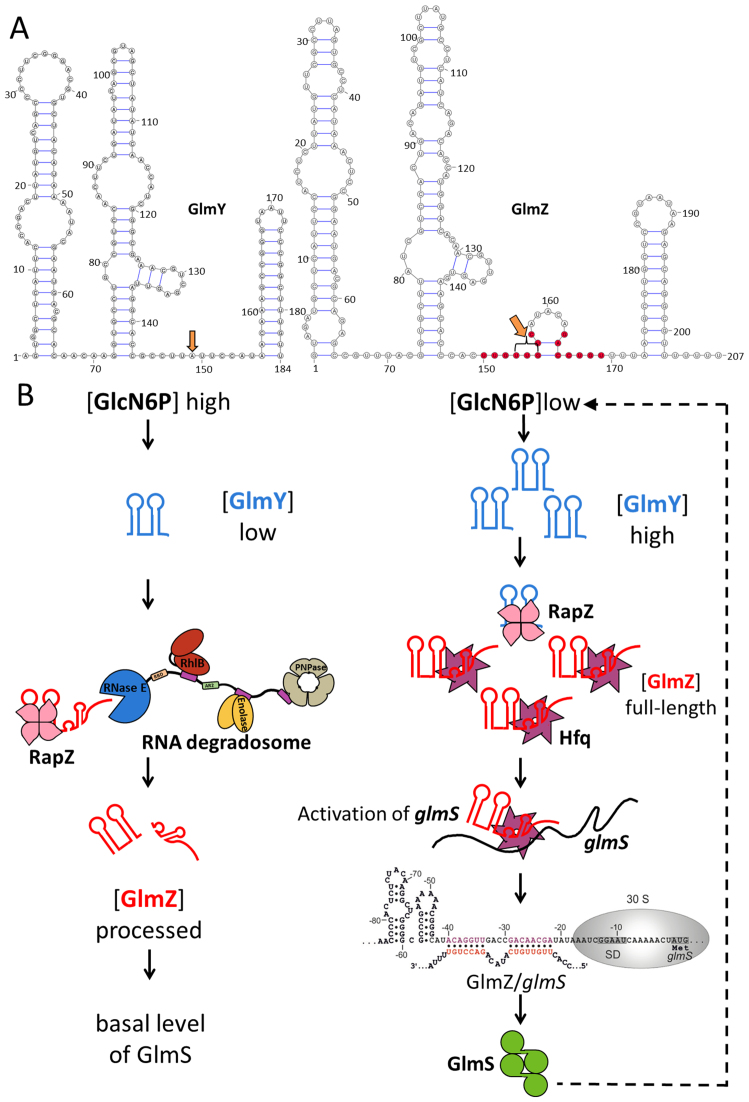Figure 1.
The role of GlmY/GlmZ sRNAs in regulating glucosamine-6-phosphate (GlcN6P) levels in Escherichia coli. (A) Predicted secondary structures of the sRNAs GlmY and GlmZ (8). The sites that are processed to generate the mature forms of these sRNAs are indicated by orange arrows. GlmZ nucleotides involved in base-pairing with the glmS transcript are labelled in red. (B) Model for the control of the GlmY/GlmZ cascade by RapZ. When GlcN6P concentrations are high in the cell, GlmY is present in low amounts. Under these conditions, RapZ is free to bind GlmZ and facilitate processing by RNase E, thereby inactivating GlmZ and blocking GlmS synthesis. When GlcN6P levels decrease, processed GlmY accumulates and binds and sequesters RapZ. As a result, GlmZ is free to base-pair with glmS in an Hfq-dependent manner and activate synthesis of GlmS, which catalyses the generation of GlcN6P. Figure adapted from Göpel et al. (8).

